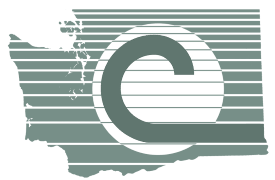Diversity, Equity, and Inclusion Resources
If you are wondering what all the fuss is about diversity, equity, and inclusion (abbreviated as DEI), we suggest starting at the top of the page under Getting Started with DEI. The second section presents resources for conservation districts, titled Information & Resources of Immediate Benefit to Conservation Districts. The third section, More About DEI, contains additional resources that may be useful to conservation districts.
As always, we appreciate your suggestions. Please send them to .
1 – Getting Started with DEI
What is Conscious Language?
Let’s start with the concept of conscious language. What is it and why is it important?
Conscious language, a term coined by Conscious Style Guide founder Karen Yin, refers to language rooted in critical thinking and compassion, used skillfully in a specific context. Using conscious language involves asking yourself questions such as: Who is my audience? What tone and level of formality do I want? What am I trying to achieve? How might history change the impact of my language choices regardless of my intentions? Who’s being excluded? (Source: Conscious Style Guide)
A good guide to conscious language is available at Best Colleges who suggest these practices:
Be willing to learn
Learning is a lifelong process, especially if you want to educate yourself about new identities and cultural experiences. Addressing and conversing with people from different cultures and backgrounds requires a willingness to learn about and empathize with someone else’s life experiences.
Be respectful
Holding meaningful conversations with people across different identities, cultures, and backgrounds includes honoring the way someone would like to be referred to and talked about (e.g., some situations call for person-first language, while others may call for identity-first language).
Be specific
Because identity is complicated, learning language specific to certain communities and identities is necessary. Try to avoid making blanket assumptions or statements about a person or group of people (e.g., don’t say “students of color” if you’re talking specifically about Black students).
They include this video to help you understand how others are affected by what people say:
What is the difference between Diversity, Equity, and Inclusion?
The National Association of Conservation Districts provides a very simple entry point to understanding diversity, equity, and inclusion:
Diversity is who we are. It is a broad concept that encompasses all the differences among individuals. Diversity, therefore, is all-inclusive, of all people and their thoughts, ideas, backgrounds, and experiences.
Equity is how we do it. It is the guarantee of fair treatment, access, opportunity, and advancement for all.
Inclusion is what we do. It is bringing individuals and groups into processes, activities, and decision/policy making in a way that empowers and values them. (Source: Diversity, Equity, and Inclusion Task Force Report, February 1, 2021.)
2 – Information & Resources of Immediate Benefit to Conservation Districts
WACD
- WACD DEI Committee three-year action plan (1784 downloads )
- WACD Policy on Diversity, Equity, and Inclusion (2242 downloads )
Definitions
- From the OFM website (download from OFM): DEIGlossaryofEquityRelatedTerms (download from the Hub)
- NRCS defines “equity” and “underserved”): NRCS: What is Equity?
- Definitions of Diversity, Equity, Accessibility, and Inclusion: American Alliance of Museums
- Diversity, Equity, Inclusion and Accessibility: A Foundation for Meaningful Change | U.S. Department of Labor Blog
Jobs and recruitment
- Cast a Wide Net for Diverse Job Candidates | The Center for Association Leadership, ASAE
- Diversity Inclusion and the Hiring Process | Paycom
- Recruiting, Hiring, and Onboarding Staff: Implementing Better Practices and Mitigating Bias | Training Resources for the Environmental Community
Language and generations
- Conscious Language Guide | Best Colleges
- Working Across Generations | From Millennials to Boomers: We Can Work it Out | Training Resources for the Environmental Community
Workplace
- Workplace Inclusion: Welcome to the Dance | The Center for Association Leadership, ASAE
- To Create an Intentional Culture, Ask These Questions | The Center for Association Leadership, ASAE
- Champion Diversity and Inclusion Inside and Out | The Center for Association Leadership, ASAE
- To Be More Inclusive, Support a Spectrum of Abilities | The Center for Association Leadership, ASAE
- Laying the Foundations for DEI Work in Your Organization: An Introduction to Diversity, Equity and Inclusion | Training Resources for the Environmental Community
3 – More About DEI
Background / beginning topics
- What’s the Difference Between Diversity, Inclusion, and Equity? | General Assembly blog
- From Diversity to Inclusion to Equity | The Center for Association Leadership, ASAE
- DEI Tools and Resources | National Council of Nonprofits
- The Top Five Barriers to Inclusion and Why You Should Avoid Them | The Center for Association Leadership, ASAE
- Crafting a DEI Case for Change and DEI Statement | Training Resources for the Environmental Community
- DEI: Holding Ourselves and Each Other Accountable | Training Resources for the Environmental Community
- DEI is the new Checklist | Medium
- Environmental Justice and Quality of Life | USDA National Agricultural Laboratory
- From Words to Action (PDF download)| Learning for Funders
Board
- 5 Questions for board diversity (PDF download) | sourced from Boardsource.org
- Why Diversity Matters in the Boardroom | DirectorPoint
- If Your Board Looked Like Your Community | Medium
- NACD 2005 Outreach for Success Packet Materials (DOC download) | NACD
- NACD 2005 Outreach for Success Training design (DOC download) | NACD
Communities
- Improving your Partnerships with US Indigenous Communities | Training Resources for the Environmental Community
Similar organizations
- Diversity, Equity, and Inclusion | National Association of Conservation Districts
- Diversity, Equity, and Inclusion | East Multnomah Soil and Water Conservation District
- Diversity, Equity, and Inclusion | West Multnomah Soil and Water Conservation District
- Equity Statement | Pierce Conservation District
- NACo: County Resources on Diversity, Equity & Inclusion | National Association of Counties
- Also: Washington State Office of Equity
Website
- How to Ensure Your Website Is Inclusive and Welcoming | The Center for Association Leadership, ASAE
